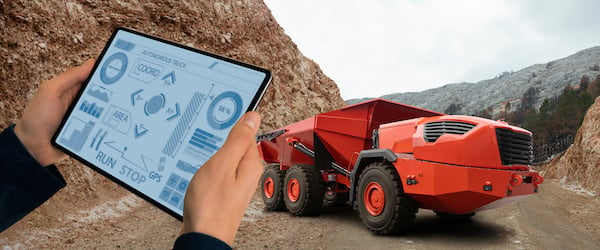“Open the pod bay doors HAL!” "I'm sorry, Dave. I'm afraid I can't do that." In the classic 1968 movie 2001: A Space Odyssey, astronaut Dave Bowman asked the eerie supercomputer HAL to open the ship's pod bay doors and let him back inside. HAL refused, showing us to be careful of artificial intelligence evolving beyond human’s ability to control it. How about the Heavy Earth Mover Oxygen-Absent Bucket Wheel Excavator in the 2009 movie Avatar. The machine features multiple bucket wheels that chew away at the rock face. The operators receive information about the excavator’s maneuvers from a display board attached to their helmets.
Science Fiction, or Today’s Reality? 
“Automation of data-driven enterprise tasks started in the 1960s with the introduction of enterprise resource planning systems and now has evolved to include robotic process automation.” According to a report from PwC, it is estimated one-third of all jobs could be automated by the mid-2030s. We just need to make sure they “open the pod bay doors” when we ask.
Autonomous Machinery
Much of construction work is suited for autonomous machinery, as many tasks are highly repetitive. This is why the manufacturing sector started embracing robotic welding, pick and place, programable material handling and other recurring functions decades ago. The transformation to automation for repetitive tasks is commonplace today.
The industry is ripe for automation: oil and gas projects, mining and large infrastructure construction jobs typically take 20 percent longer to complete than forecasted and tend to run 80 percent over budget.
Automation in construction and mining can also help address safety concerns. These sectors are historically hazardous, hovering around 20 percent of workplace fatalities. Autonomous equipment would significantly reduce injuries and deaths by removing human error from the equation.
This is not to say that autonomous construction equipment is going to wipe out the workforce. There will continue to be a need for heavy labor and a convergence in the industry to more technology-oriented job growth.
Construction Automation on the Job
Self-sufficient equipment has been on job sites for years with autonomous excavators, self-driving trucks and autonomous haul trucks, etc. Automated equipment, particularly autonomous excavators and mining equipment, are currently used for:
- Digging in construction of wind farms
- Excavating for underground long-distance transmission of oil and gas pipelines
- Trenching on farms
- Installing underground cables for solar technology
- Longwall underground mining systems with hydraulic roof supports
Conclusion
There are new and exciting technologies in construction equipment automation, and there are major players who have made yesterday’s ideas a reality.
Two of the world’s largest off-road vehicle manufacturers, Komatsu and Caterpillar, have autonomous machines operating in a variety of industries. As of September 2021, mining companies hauled more than four billion metric tons of materials with Komatsu’s FrontRunner Autonomous Haulage System. In February 2022, Caterpillar announced they reached a significant milestone with over 500 autonomous haul trucks operating on job sites around the world. These are just a few examples that are moving the industry into the future.
However, we still have a long way to go to ensure we control technology and not the other way around. Mistakes are still happening in our effort to compete in an artificially intelligent world. This year, the new iPhone 14 crash detection feature accidentally triggered 911 calls from a dozen phones on roller coasters at Kings Island near Cincinnati, Ohio. In 2019, an electric car’s semi-autonomous autopilot software was engaged when it slammed into a tractor-trailer attempting to cross a Florida highway. The car was traveling around 68 miles per hour, shearing the roof off and killing the driver. These may be isolated examples, one somewhat funny, the other very tragic. Regardless, in order to achieve something miraculous, sacrifices and mistakes are inevitable. “You can’t make an omelet without breaking a few eggs”: Robert Louis Stevenson, 1897.
Learn more from our Bluprint:
Additional Sources Include:

